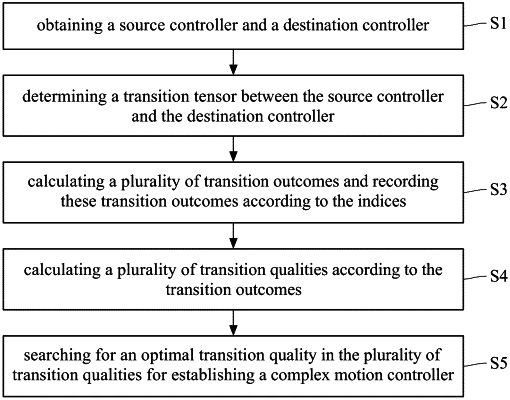| CPC G06T 13/40 (2013.01) [G06N 3/08 (2013.01); G06T 7/20 (2013.01); G06T 2213/12 (2013.01)] | 8 Claims |

|
1. A method for establishing a complex motion controller, comprising following steps performed by a processor:
obtaining a source controller and a destination controller, wherein the source controller is configured to generate a source motion, and the destination controller is configured to generate a destination motion;
determining a transition tensor between the source controller and the destination controller, wherein the transition tensor has a plurality of indices, and one of the plurality of indices corresponds to a plurality of phases of the source motion;
calculating a plurality of transition outcomes of the transition tensor and recording the plurality of transition outcomes according to the plurality of indices;
calculating a plurality of transition qualities according to the plurality of transition outcomes; and
searching for an optimal transition quality from the plurality of transition qualities to establish a complex motion controller for generating a complex motion corresponding to one of the plurality of phases;
wherein each of the source controller and the destination controller generate each of the source motion and the destination motion according to a current state and a control objective;
wherein the source controller and the destination controller belong to a template controller;
before the template controller is trained, the method further comprises:
collecting a plurality of reference motion clips by a kinematic controller; and
changing an input parameter in a repetitive control of each of the plurality of reference motion clips; and
when the template controller is trained, the method further comprises:
introducing an external perturbation; and
using a deep reinforcement learning to train the template controller, wherein the control objective comprises a movement speed of a target, a heading of the target, and a height of a center-of-mass of the target.
|